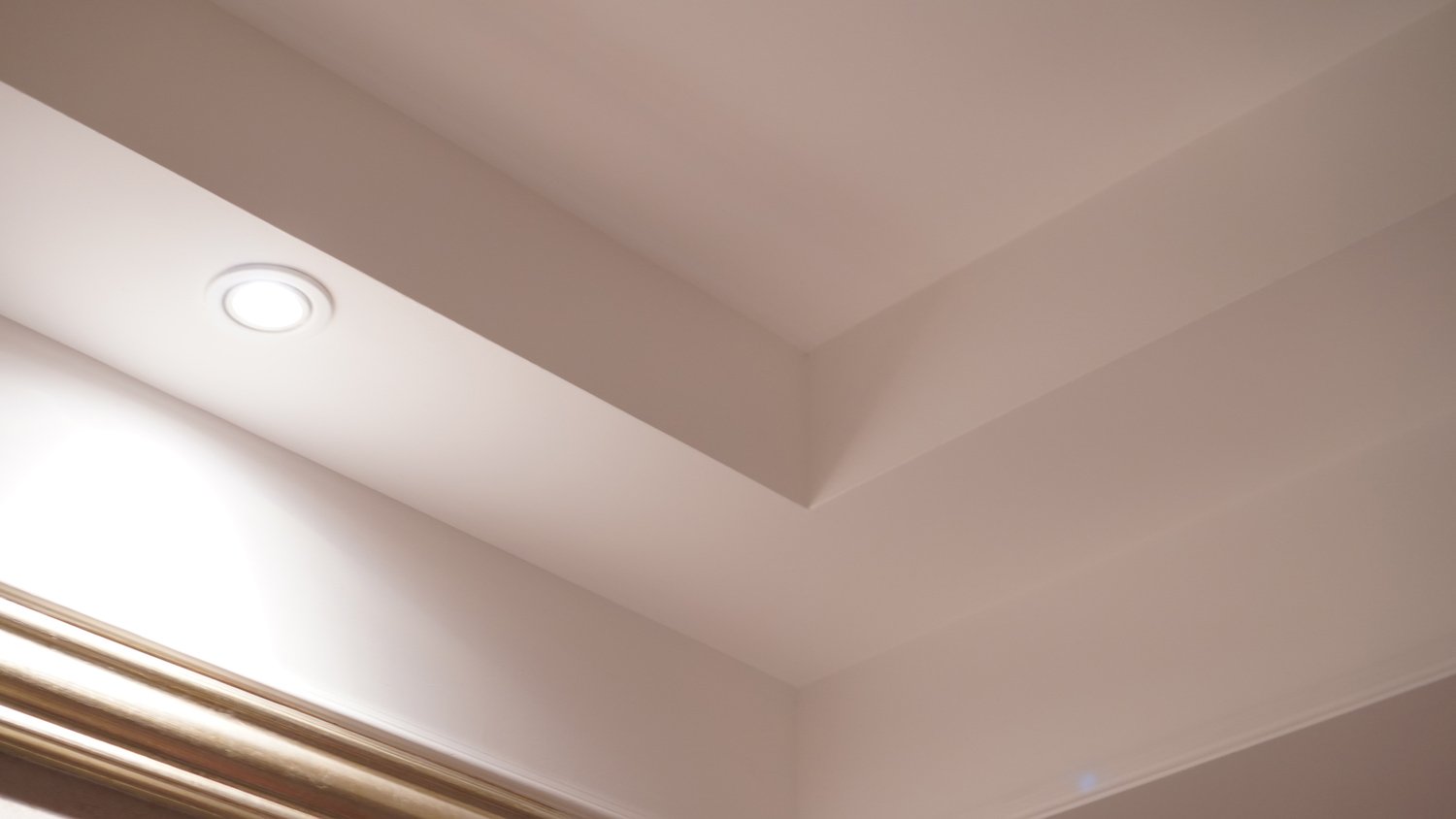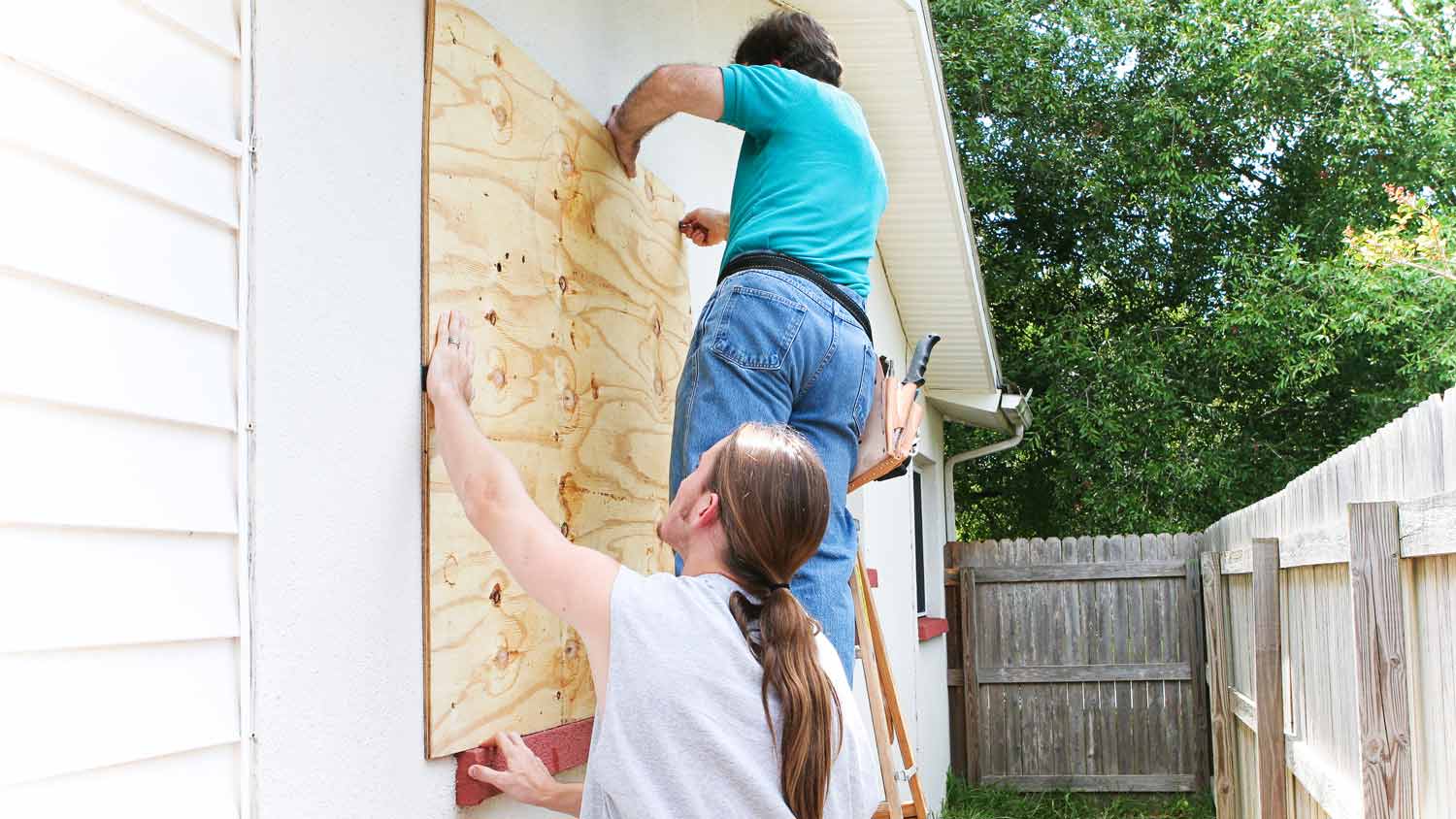
Most building projects and septic installations require soil testing to ensure proper drainage. Learn how much a perc test costs and what affects costs.
Time to elevate your ceiling design knowledge


Coffered ceilings have been around since Ancient Greece, historically used to support domed ceilings.
Tray ceilings are a newer design, meant to be a less-expensive alternative to coffered ceilings.
Coffered ceilings have multiple recessed areas, while tray ceilings have just one recessed area.
Coffered ceilings can cost $10–$40 per square foot, significantly more expensive than tray ceilings.
The ceilings in your home can be conventional and flat, or you can elevate your space with a unique ceiling design that adds both flair and includes functional benefits, such as improved acoustics. Coffered and tray ceilings are two popular options for decorative ceilings, but what sets them apart? We've highlighted the key features of each style to help you choose the best fit for your home, design preferences, and budget.
While coffered ceilings and tray ceilings are sometimes used interchangeably, they are distinct in appearance and intended architectural function. Take a closer look at what sets these ceiling styles apart to choose the best option for your home.
| Type of Difference | Coffered Ceilings | Tray Ceilings |
|---|---|---|
| Recessed areas | Several | Just one |
| Materials | Many options, but typically wood | Often plaster and drywall |
| Design function | Personal, intimate feel | Grand, open architectural look |
| Ideal rooms | Kitchens, living rooms, dens | Dining rooms, entryways |
| Cost | $10–$40 per square foot | $3–$7 per square foot |

While tray ceilings are sometimes thought of as wallet-friendly alternatives to coffered ceilings, these styles have significant differences that can change the look and feel of the rooms they are installed in.
Coffered ceilings have multiple recessed areas, while tray ceilings just have one. Originally, coffered ceilings were used in Ancient Greece and Ancient Rome to support domed ceilings with additional beams. Tray ceilings, however, became more popular in the late 1990s and early 2000s as a less expensive alternative to coffered ceilings.
Coffered ceilings are used in rooms where you want to create an intimate atmosphere; they can break up an interior space and improve a room’s acoustics. That said, they can make a ceiling seem heavy and low, so they are best used in rooms with very high ceilings.
Tray ceilings, by comparison, offer a grandiose architectural style and work to open up a room and make it appear larger. These ceilings can also be a smart way to hide the addition of a vent system in older homes—many use the perimeter of the tray ceiling as a way to hide wires or plumbing.
These ceiling styles often use different materials. Tray ceilings are almost always wrapped in drywall and plaster and finished with crown molding. Coffered ceilings are typically made with wood, steel, or glass. The beams of a coffered ceiling can be “faux beams,” which is a lightweight material such as plaster or Styrofoam. “Functional beams” are made from real wood to add support to the ceiling.
The cost of coffered ceilings is much more expensive than that of tray ceilings, as they require more materials and additional hours of labor. While the final price will depend on the materials used, the size of the ceiling, and optional features such as lighting, expect to spend $3–$7 per square foot for a tray ceiling and $10–$40 per square foot for a coffered ceiling. To get the most accurate quote for your ceiling design, contact a ceiling company near you.
Precision and professionalism define Custom Paint Jobs LLC. We couldnt be happier.
Window Depot did an amazing job on my deck. I wasnt sure what I wanted to do, but their composite decking was affordable and will last a long time. I am excited to have family over, and I am no longer embarrassed by my backyard. Jeff and the ground crew were polite, respectful, and caring for...
Great tree company, very professional and honest. Glad we found them, they had the best pricing
Great experience all together. Dog friendly, courteous, great results and honest with recommendations. Will certainly be using Cardinal in the future for any carpet repairs
Eugene returned my call within minutes and was able to complete the job within a couple of days. Friendly and professional, and I feel his prices are reasonable.
We used Unique Hardwood Floor LLC three years ago to work on the floors of a 70 year old home that needed a great deal of work. Some floors needed repairs, some were replaced and others just needed to be refinished. It was a complicated job as they needed to blend the old and the new to...
BJ Trim Carpentry rescued me in the middle of a do-it-yourself project. I found I needed more expertise than I had...and more TOOLS! BJ Trim Carpentry responded quickly and completed what I needed expertly, politely and with a little humor!
Final bathroom looks excellent. The team was easy to work with and friendly. Work start date was delayed due to damaged shower unit, which was ordered and arrived broken. Once shower stall arrived, work went fairly quickly although there were some pauses. They were really good at the end...
They did really extensive work and did an amazing job. It took about six months altogether, but they did a very good job for our waterworks. Our neighborhood has a lot of older houses that have a kind of like a low basement, and ours was unfinished, and won't do with semi-finished and not in...
This company does excellent work. The carpentry work is outstanding and we were very pleased with the final results. The only drawback is they are very expensive. The craftsmen that did our work Al and Micah were extremely pleasant to work with and offered useful suggestions any time we ran...
From average costs to expert advice, get all the answers you need to get your job done.

Most building projects and septic installations require soil testing to ensure proper drainage. Learn how much a perc test costs and what affects costs.

When your home project requires a professional at the helm, how much are construction management fees, and how do they determine their rate? Let's break it down.

Discover storm damage repair costs, key price factors, and ways to save. Get transparent estimates to plan your home repairs with confidence.

Many homeowners are unsure about tipping contractors, and if so, how much. This quick guide will help you understand whether you should tip.

Find out how much a shaftless home elevator costs, including additional factors that can drive up the overall installation price.

A roll-in shower can increase safety in the bathroom and come with a high ROI. Read this guide to learn about how much a roll-in shower costs.